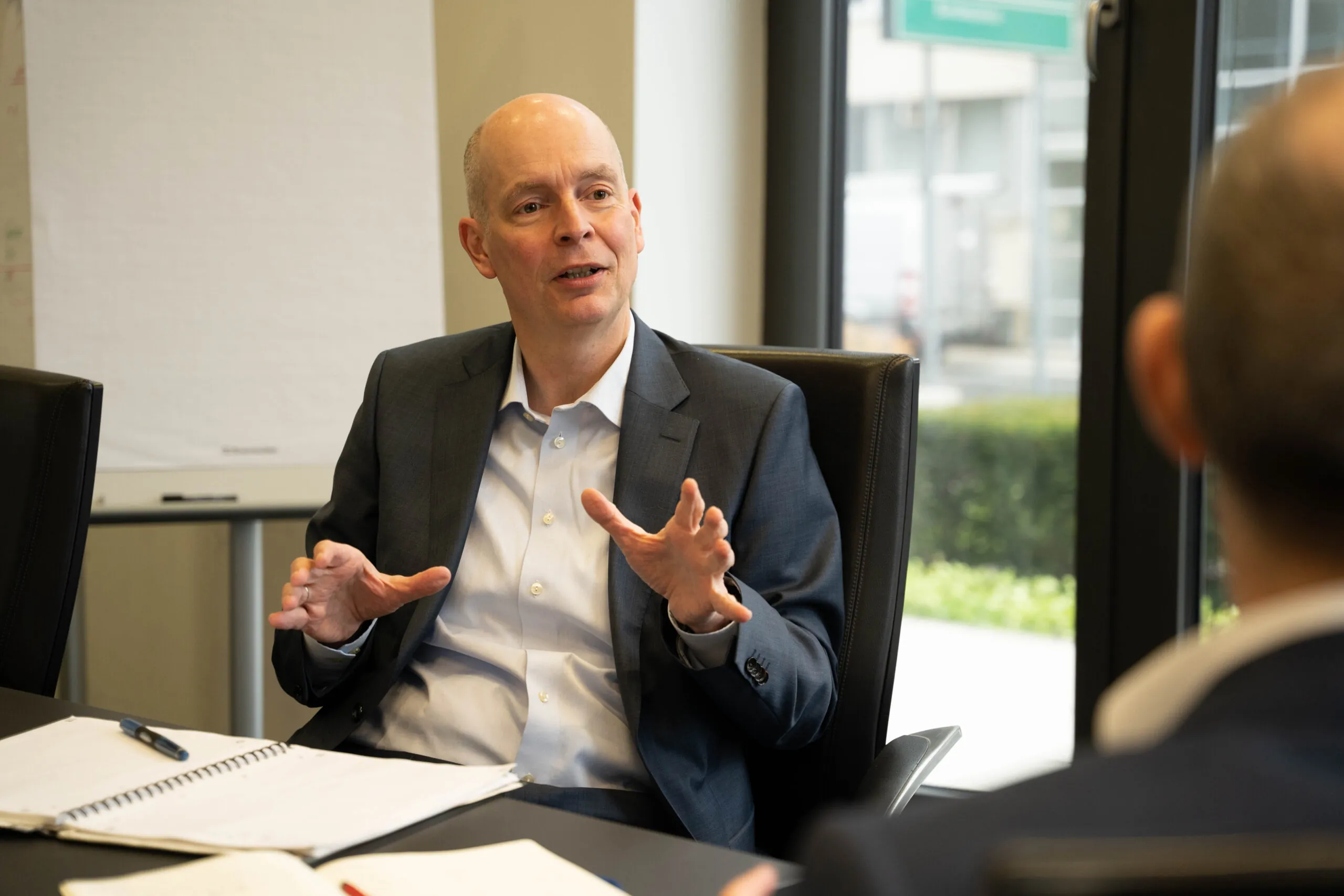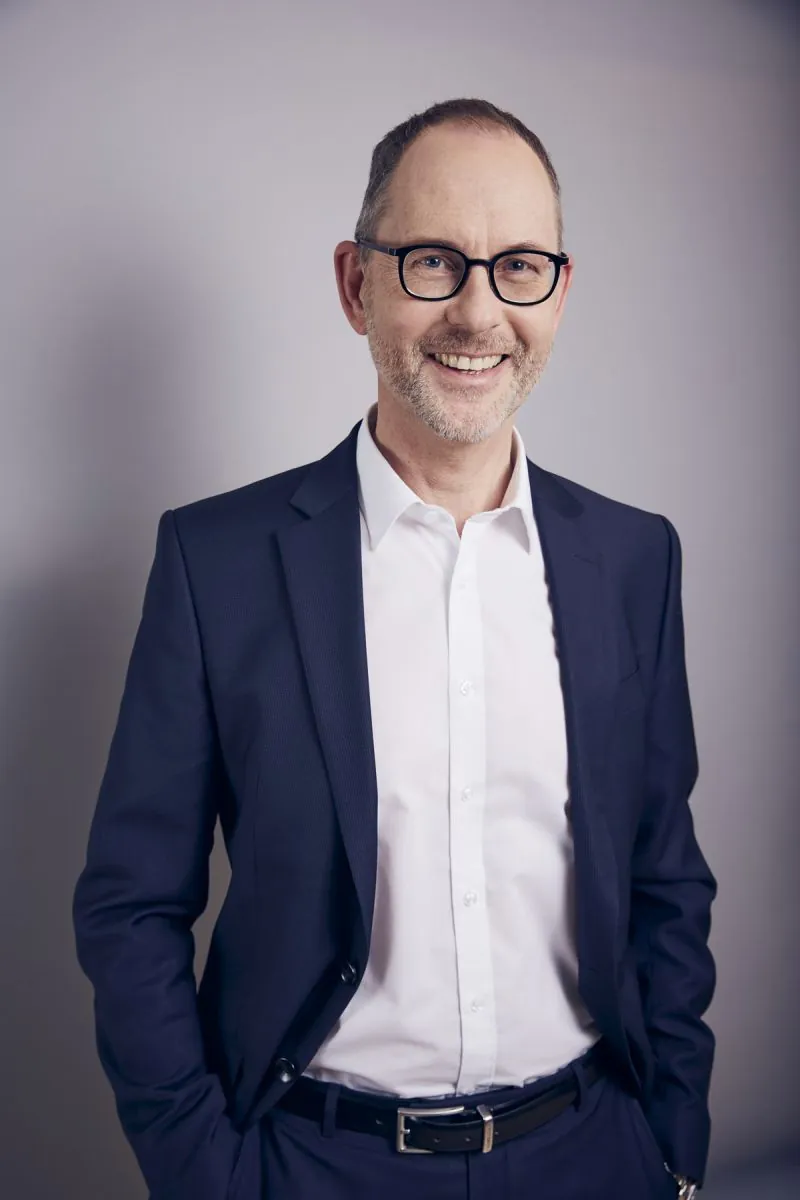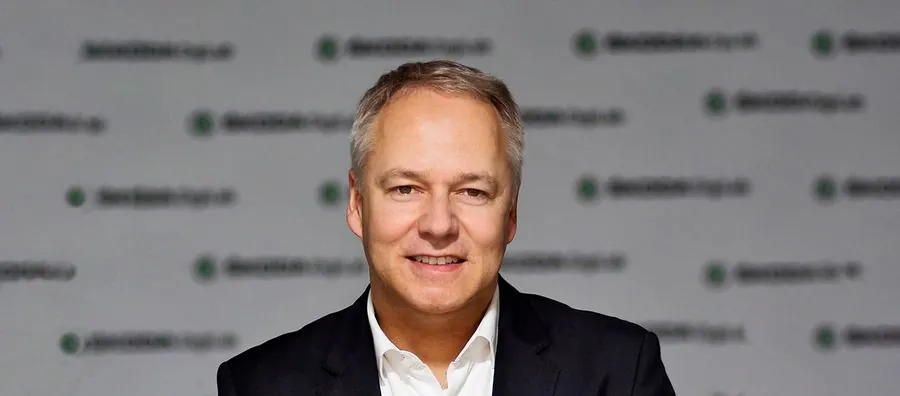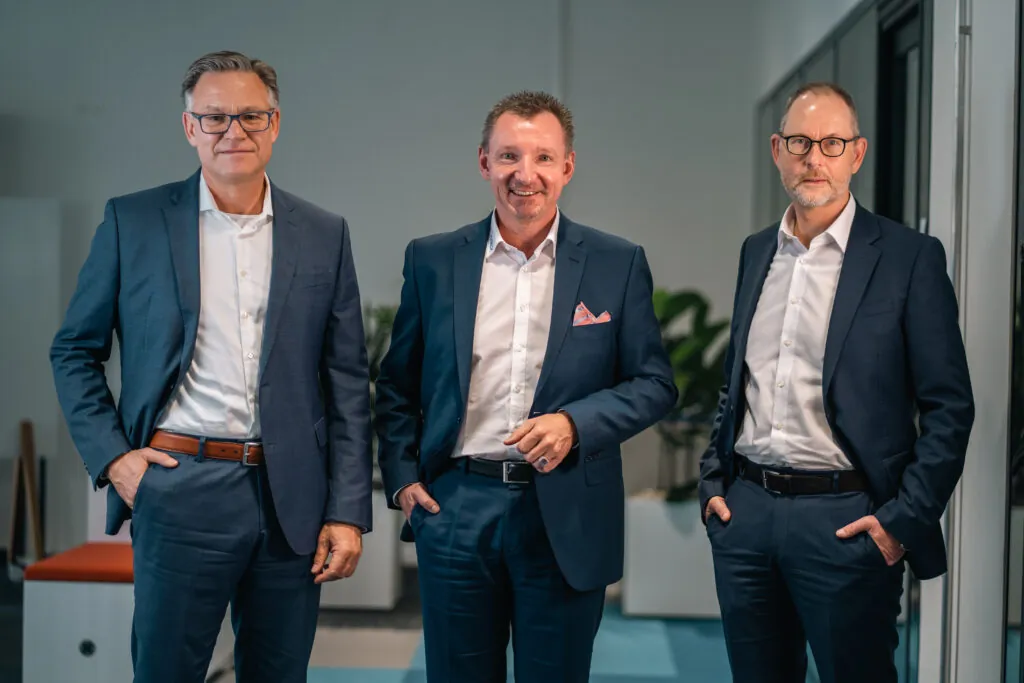
IT Organization 2025

“Business and IT symbiosis – removing mental hurdles, but avoiding tear-off edges”
Dr. Wolfgang Standhaft, Senior Executive Vice President and CIO of Fraport AG, is certain that IT is becoming more democratic – and that cooperation with the business is becoming closer. In an interview with Thomas Heinevetter, Managing Director of management consultancy kobaltblau, he explains the reasons and the benefits for companies.
How is IT at Fraport positioning itself for the future and for optimum cooperation with the business?
Thomas Heinevetter: How is the IT positioning itself at Fraport for the future and for optimal collaboration with the business?
Dr. Wolfgang Standhaft: The IT, which has been hierarchical in nature so far, is to be restructured. There are four areas of action for this purpose. On one hand, we are intensively training employees and positioning them more cross-functionally and closer to the business. Additionally, we want to establish an ‘open-minded culture’. The fourth point concerns the IT strategy itself: While the systems are performant today, they can still be further optimized and renewed.
Heinevetter: Are there already concrete initiatives?
Dr. Standhaft: We want to establish so-called BizDevOps teams: organizations where parts of departments – such as operations or reporting – are spatially integrated with the consumers of the service. This means: The team from the Aviation department, which operates the apron with the airplanes as well as the terminals, regularly meets with IT specialists for aviation systems or IT specialists for operational reporting. The purpose: Closer cooperation allows for faster, more agile project approaches and methods to be more strongly anchored in daily operations. This combines day-to-day operations, sprints in agile projects, and collaboration beyond the traditional desk, improving collaboration. And we have established a ‘Digital Factory’. It is located outside of IT but works together with it. Its focus: Finding possible solutions from startups as well as innovative corporates.
Heinevetter: So, a tendency towards the merging of IT and business?
Dr. Standhaft: Initially, barriers in the mind should be dismantled, but demolition edges should be avoided. The IT teams integrated into the BizDevOps team remain part of the corporate IT. For me, it is important that in this phase one has a good sense of direction and develops a feeling for what IT means as a whole and where it can fulfill what purpose in the business process.
Heinevetter: What speaks more for virtual teams?
Dr. Standhaft: The broad spectrum of business areas speaks for it. As an airport operator, Fraport is responsible not only for the safe operation of the apron and terminals but also serves as a handling agent, retail operator, parking manager, real estate company, and maintainer of the entire infrastructure. The Fraport group employs about 20,000 people at the Frankfurt location. Activities include, for example, the maintenance of elevators, escalators, automatic closures, security checks, and parking garages. This conglomerate of tasks requires a multidimensional approach.
Heinevetter: When are virtual teams the first choice?
Dr. Standhaft: The model of virtual teams is well-suited in the aviation sector. However, we are also testing other models. The concept of the ‘flexible office’ also plays a role: without fixed workplaces in an open office environment. This allows business and IT to be brought together even more closely and easily in certain areas.
Heinevetter: Doesn’t a merger primarily make sense for cross-sectional processes?
Dr. Standhaft: Before the pandemic, we wanted to start with back-office processes. However, all areas suffered from Corona, including the operational areas. Therefore, we are now starting where the greatest benefit is generated to revive Fraport after the crisis: in the operations area.
Heinevetter: At what point in the journey are you?
Dr. Standhaft: A major program deals with our journey to the cloud. We are converting a large, partially self-developed and on-premise-operated landscape into the cloud as one of the first critical systems in the reporting landscape. The rollout of Microsoft 365 sets further guidelines. However, this also explicitly includes other components: The data pools of the various areas are extracted, made consistent, homogeneous. And every authorized person can access them. This process is controlled by a data and analytics strategy.
Heinevetter: Does this also solve the problems with shadow IT or with citizen developers in business areas?
Dr. Standhaft: Today’s ‘citizen developers’ are the Excel specialists of the past. They have always existed. With the move to the cloud, the relocation of data pools, however, we ensure that the citizen developers, i.e., the ex-Excel developers, have access to them. Under our guidance and training, they can then develop their solutions – while adhering to IT governance. The prerequisite is that aspiring ambitious experts receive the right training and certification. This increases democratization and freedom in the business areas. As part of the data and analytics strategy, we have adopted a data governance and are implementing a data literacy project.

Heinevetter: Can the future team of citizen developers eventually replace the responsibility of the application team?
Dr. Standhaft: No. We empower the business while providing guidance towards governance at the same time. Our experience: We achieve the best results with small expert teams located in IT. They are not only responsible for governance but also drive flagship projects forward, such as process automation and artificial intelligence.
Heinevetter: Can you provide an example?
Dr. Standhaft: We have developed and implemented a system that won first place in the innovation competition of the International Association of Airport Executives. It involves correcting incorrectly assigned baggage in critical parts of the baggage handling system from the check-in counter to the aircraft. A team of baggage specialists and IT developers implemented an AI solution that takes a picture of each piece of luggage and compares it again before assigning it to the aircraft. This reduced the number of incorrectly assigned pieces of luggage by over ninety percent. This team is also the nucleus that other interested parties can orient themselves around, those who want to solve their own area-specific tasks using pre-configured and pre-trained initial AI models.
Heinevetter: Do these expert teams define their own use cases?
Dr. Standhaft: In this specific example, the use case arose from discussions with the department – following the motto: Where does it pinch? Corresponding external knowledge, departmental knowledge, and IT knowledge were then merged. This approach pays off and is accepted: IT is to some extent present but also always steps back. It sets frameworks and provides assistance. And we redirect shadow IT into productive channels.
Heinevetter: How are product teams generally structured at Fraport?
Dr. Standhaft: In a hierarchically structured organization, product teams consist of a fixed allocation of product owner, consultants, developers, and delivery managers responsible for implementation, further development, and operation. In the area of application development, this is now to become more flexible: This previously bundled activity – where the product owner is also a manager – is being transformed into a matrix organization. It includes ‘people managers’ who focus on the development of their assigned group of employees and ‘staff’ them into product teams. At the same time, people managers can provide additional capacities in required skills for projects and product operation through external partners. On the other hand, it includes product managers responsible for the functional development of the products. In this matrix of application development, the responsible parties must move to ensure the appropriate staffing for projects and operations. Additionally, a small group of portfolio managers controls the solution landscape at a strategic level and prioritizes the further development of the system landscape together with the business.
Heinevetter: So, product managers control teams that are then allocated resources from the people manager teams?
Dr. Standhaft: Yes, they are arranged with equal importance. Thus, we take into account the strengths of individual employees. On the other hand, we become more agile and flexible. A flexible organization helps to operate IT not as a monolith within Fraport but allows it to act as an IT broker, integrating outsourcing partners in infrastructure management and project and operational partners.
Heinevetter: How is the model being received? It is based on the Spotify approach, isn’t it?
Dr. Standhaft: It has the grounding of an airport operator. At Fraport, there are no tribes, squads, chapters, and guilds – instead, there is the Flex-O project with its go-live this year. Assessments have revealed which people from the IT organization see themselves more in the role of people manager and which see themselves more in the technical role of a product manager or portfolio manager.
Heinevetter: How far would you go in terms of autonomy for product teams? Would it be important for you, for example, to involve HR in a product team?
Dr. Standhaft: We operate in a heavily regulated market – especially in the operations area. This inherently limits degrees of freedom. However, when merging IT with back-office functions, we will be able to grant more degrees of freedom from an IT perspective. For example, in the jointly conducted Robotic Process Automation project with accounting. Here, we have defined a project manager coming from accounting who, together with a project manager from IT, can also transfer decisions to the project team assigned to him, consisting of departmental, external, and internal IT members.
Heinevetter: If product teams are autonomous tomorrow and have their product manager, does the classical demand manager still have a raison d’être?
Dr. Standhaft: In a flexible organization, portfolio management, together with product management, will also assume the demand function. Demand is prioritized through the digitalization board, which is occupied, among others, by several members of the board but also by essential business and service area managers. It ensures, through feedback loops, that value-generating demand is implemented.
Heinevetter: How will you handle resource management in the future?
Dr. Standhaft: In addition to the flexible organization to break up the old structures, it is important to involve project and operational partners. Here, we tend to move away from small-scale awarding of contracts to broad support – through technology, software, methods, and also knowledge in new technologies such as artificial intelligence.
Heinevetter: What impact will the development towards a data-driven organization have on the IT organization and the company as a whole?
Dr. Standhaft: Through the data pools in the cloud and an empowered business, the IT organization will repeatedly fuel internal discussions and also citizen developers as a supervising organization in the center. These data pools, the possibilities of data analysis, and technologies such as visualization or AI require that the IT organization can multiply its capabilities by involving external service providers more strongly. Through data governance and the provision of tools and also by certifying various options, IT plays an increasingly important role. The IT of the future: It sets the framework and nudges the user – and if necessary, guides them back to the path of virtue.
Heinevetter: What are your top 3 areas of action?
Dr. Standhaft: These are a) the restructuring of the organization with a focus on application development (Flex-O); b) depending on the area, deepening cooperation with the departments (BizDevOps); and c) the new organization must demonstrate to all departments and top management that the transformed IT is more value-creating than the IT before the Corona crisis.

Wolfgang Standhaft
Dr. Wolfgang Standhaft has held various roles in consulting and training at SAP, focusing on large clients. Subsequently, he was responsible for the European IT systems of the REWE Group before taking on the role of global CIO at Heidelberg Cement for more than a decade. He integrated acquisitions worth several billion euros, established a low-cost shared service-based IT organization in more than 40 countries, and supported process standardization. In 2019, he joined Fraport AG as CIO. His focus areas include transforming the IT organization into an enabler, driving digitalization, including AI, and transforming into a data-driven company.




